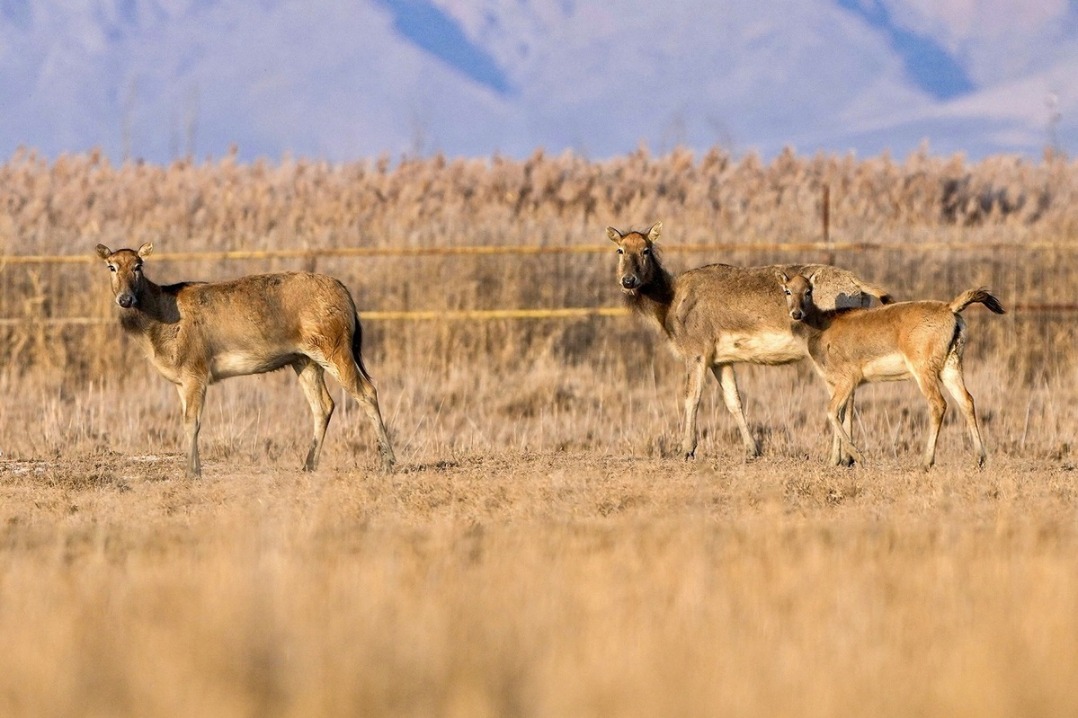Xi'an City Wall gets health checkup after heavy rains

Cultural relics protection authorities in Xi'an, Shaanxi province, are implementing comprehensive measures to protect the iconic Xi'an City Wall from heavy rains linked to climate change, particularly over the past few months.
Since September, the province has experienced three prolonged rainy periods, with 87 monitoring stations recording more than 20 days of rainfall. The stations collectively recorded an average precipitation of 314 millimeters, 1.6 times higher than the normal level for this period. This marks the second-highest precipitation since 1961, trailing only 2021.
The risks posed by heavy rainfall became clear five years ago. In August 2020, a 20-meter section of the protective masonry on the southern part of the Qin Prince Palace wall in Xi'an collapsed due to heavy rainfall. It was confirmed that only the recently restored outer layer was damaged, while the original Ming Dynasty (1368-1644) rammed-earth structure remained intact.
"The primary cause of damage to the wall over the years has been water," said Gao Heng, head of the cultural heritage protection department of the Xi'an City Wall Management Committee.
According to Gao, increased moisture leads to two main types of damage: surface deterioration and structural issues. Surface deterioration primarily involves the growth of moss and lichen in the brick joints due to a more humid microclimate. While this does not threaten the wall's overall structural integrity, the growth requires manual removal.
A more significant concern is water seeping into cracks and reaching the wall's core, which is made of rammed earth. Once water infiltrates the rammed-earth structure, the soil's bearing capacity decreases, potentially leading to localized settlement or collapse.
"This, in turn, triggers localized subsidence and collapse. These cracks and depressions then channel rainwater, accelerating infiltration and creating a self-reinforcing vicious cycle that continuously threatens the structural safety of the wall," Gao said.
To address these problems, the committee has adopted a differentiated maintenance approach. Routine maintenance includes promptly sealing cracks to block water seepage pathways and addressing settlement by re-leveling surface bricks and replacing damaged ones in affected areas. Engineering measures are required when severe cracks or significant settlement appear. These involve more thorough solutions such as re-compacting loose, unconsolidated soil on the wall's summit to enhance its bearing capacity and prevent water seepage.
A key drainage project, approved by the National Cultural Heritage Administration, is being implemented around the wall's foundation to divert rainwater.
"Keeping water away from the wall's base is crucial to its long-term stability," Gao said.
The committee has also introduced a "wall chief" system, assigning individuals to oversee specific sections for routine monitoring and the early reporting of issues.
Technology plays a vital role in these efforts. Since 2018, a "digital cabin" system that integrates more than 3,000 sensors has been deployed to monitor settlement, crack displacement and other vital signs. Drones are deployed once every three months for aerial inspections. A four-color warning system — red, orange, yellow and green — assesses risks based on the severity and rate of change of any damage, allowing for targeted responses.
In 2023, a full "CT health scan" of the 13.74-kilometer-long wall was conducted using ground-penetrating radar and high-resolution surface wave technology. It revealed more than 1,300 historical cavities and 800 areas of less compact soil within the wall.
"These are not immediate dangers, but they are hidden risks we must monitor," Gao said.
Collaboration is another cornerstone of the preservation work. Gao said the local meteorological bureau provides specialized weather forecasts and early warnings, while universities such as Northwest University and a multidisciplinary committee of experts offer academic and technical support.
- Xi'an City Wall gets health checkup after heavy rains
- Forum lauds enhanced China-Central Asia ties
- Research reveals parallels in antidepressant therapies
- Experts urge disease prevention awareness to boost HPV vaccination
- Scientists discover rare earth elements in ferns
- China calls for improved international cooperation on disaster response



































